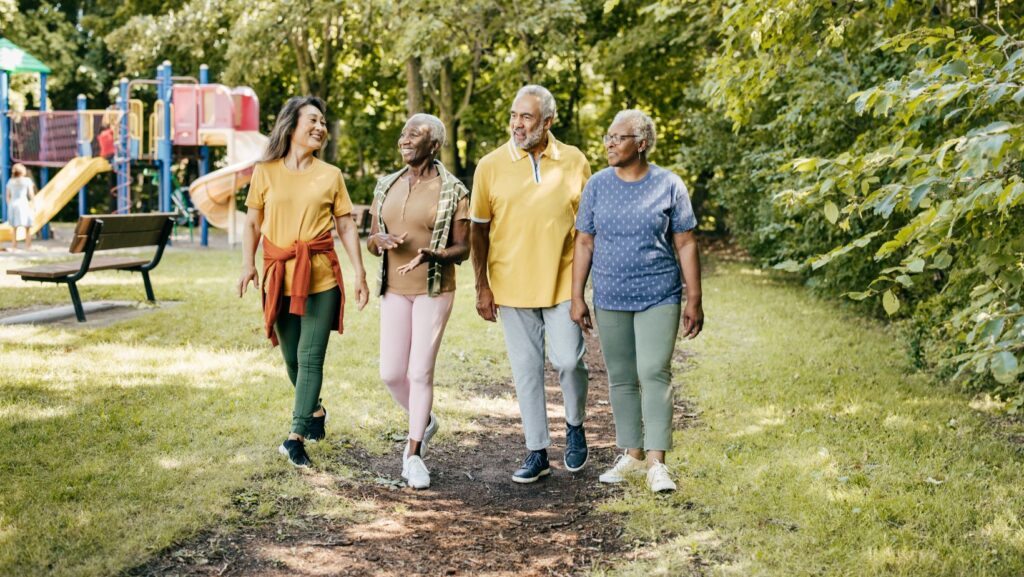As we age, the environments we inhabit become increasingly important to our well-being. The transition into senior living communities has often been viewed through a practical lens, focusing mainly on health care and daily living support. There is a rich fabric of social and mental benefits that elevate these communities beyond mere accommodation. By fostering relationships, creating supportive environments, and encouraging active lifestyles, senior living communities provide an enriching experience that positively impacts the mental health of their residents.
Fostering Community Connections
One of the most significant advantages of senior living communities is their capacity to create and nurture social connections. When older adults move into these communities, they often find a ready-made network of peers, which can help reduce feelings of loneliness and isolation that many experience later in life. The sense of belonging that arises from shared experiences, hobbies, and activities fosters an environment that is conducive to friendship. Regular social interaction sharpens cognitive function.
Residents often participate in various activities such as art classes, fitness sessions, or book clubs. These activities are designed to engage both the mind and body. Studies show that seniors who engage in social activities experience lower levels of depression and anxiety. In effect, such environments have been linked to improved life satisfaction and even longevity, as consistent fellowship and social bonding contribute positively to various aspects of health.
Life Enrichment Programs
Senior living communities often invest heavily in life enrichment programs that are tailored to the needs and preferences of their residents. These programs encompass a broad range of activities designed to stimulate the mind, body, and spirit. Regularly scheduled events provide opportunities for residents to explore new interests, strengthen existing skills, or simply enjoy entertainment. Engaging in such activities provides a sense of purpose, which is fundamentally important for mental health.

Life enrichment programs may include educational workshops, cultural excursions, and fitness classes. Participating in these programs keeps them physically active and mentally alert. The importance of ongoing intellectual engagement cannot be overstressed. Studies indicate that cognitive activities, such as reading or participating in discussions, can significantly delay the onset of dementia. Consequently, residents find themselves not just living but thriving in a community dedicated to holistic wellness.
Expert Care and Support
The sense of security that comes from knowing that expert care is always available cannot be understated. In senior living communities, residents have access to trained professionals who can assist with medical needs, daily living activities, or even simply offer companionship. This supportive atmosphere alleviates the stress often associated with aging, which can further impact mental health. Residents know they can reach out for assistance, allowing them to enjoy their independence without the burden of worry.
As cognitive health changes and needs evolve, appropriate care becomes vital. Understanding when to move from assisted living to memory care can contribute to mental well-being. Residents and their families can feel peace of mind knowing that if the time comes when specialized memory care is required, such services are readily available. This assurance allows residents to focus on enjoying their daily lives and engaging with their community rather than fearing potential health issues that come with aging.
The Role of Nature and Environment
Many senior living communities are designed with natural surroundings in mind, aiming to incorporate green spaces and open areas into their layouts. Studies have long demonstrated the mental health benefits of spending time in nature, suggesting that exposure to green spaces can reduce anxiety and increase feelings of calm and happiness. Senior living environments that prioritize nature create opportunities for residents to engage with outdoor activities, whether it’s gardening, walking, or simply enjoying a sunny afternoon.
Well-designed living spaces, including private apartments and common areas that encourage social interaction, contribute to residents’ happiness. By creating environments that feel more like home, without sacrificing safety or accessibility, communities can significantly enhance the mood and daily experiences of their residents. This thoughtful design supports a lifestyle that values connection, health, and joy.
Encouraging Independence
An important aspect of senior living communities is their commitment to encouraging independence among residents. With the support of staff and the availability of resources, seniors can maintain an active lifestyle that aligns with their personal goals. Independence fosters self-esteem and autonomy, which are crucial for a healthy mental state. Residents are often encouraged to pursue their passions, explore new interests, and participate in decision-making processes, whether regarding daily activities or community events.
The balance of support and freedom allows individuals to take charge of their lives in a nurturing environment. Emphasizing self-sufficiency and autonomy can dramatically improve the quality of life for seniors. This ability to engage meaningfully with their surroundings, coupled with ongoing social interaction, boosts mental acuity and emotional health, allowing them to thrive well into their golden years.
Integrating Technology for Connection and Convenience
Modern senior living communities are increasingly incorporating technology to enhance residents’ social and mental well-being. Video calling, social platforms, and virtual activity programs allow seniors to maintain connections with family and friends, even if they live far away. Digital tools also enable participation in remote educational workshops, exercise classes, or hobby groups, ensuring residents stay mentally stimulated and socially engaged.
Technology can streamline daily routines, offering reminders for medication, appointments, or wellness check-ins, which reduces stress and promotes independence. Residents who embrace these digital solutions often report feeling more empowered and connected, bridging the gap between convenience and social engagement. In this way, technology serves as both a practical aid and a catalyst for maintaining mental sharpness and emotional resilience.
Senior living communities offer far more than a safe place to reside—they provide a dynamic environment that nurtures social, emotional, and cognitive health. Through fostering community connections, offering life enrichment programs, providing expert support, emphasizing access to nature, encouraging independence, and integrating technology, these communities create holistic spaces where seniors can flourish.

Choosing the right community can profoundly impact quality of life, allowing older adults to maintain autonomy while enjoying companionship and mental stimulation. By prioritizing these social and mental benefits, families can ensure their loved ones thrive in an environment designed to support wellness, engagement, and happiness well into their later years.
